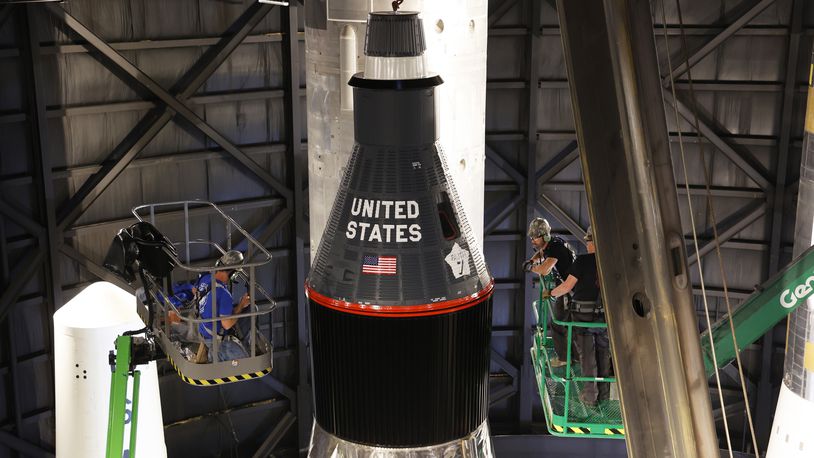Also known as the “Convair Atlas D,” it is a replica of the rocket U.S. astronaut Gordon Cooper rode into space in 1963.
Engineers designed the Atlas as the first U.S. nuclear intercontinental ballistic missile (ICBM) playing a role in the space race with the Soviet Union and in early nuclear deterrence, the museum noted in an announcement. It was later modified to carry NASA astronauts into space.
The rocket standing vertically in the museum represents the launch vehicle for Cooper’s Mercury-Atlas 9 mission on May 15 to 16, 1963.
Cooper’s was the final and longest Mercury mission, lasting more than 34 hours, orbiting Earth 22 times.
“Cooper’s Mercury-Atlas 9 flight is our opportunity to feature the early years of manned spaceflight and space exploration,” said Mark Wertheimer, museum curator. “The museum plans future exhibit and display additions to tell the exciting story of how the Air Force, and now the Space Force, have been and continue to be important contributors to our nation’s efforts in space.”
Restoration work was painstaking. The museum called attention to an adapter section near the top of the missile that held the Mercury spacecraft and a red-painted escape tower. This tower had a rocket that would pull the astronaut and spacecraft to safety in case of a problem during launch.
Those sections — adapter section, spacecraft, and escape tower, which are reproductions in this exhibit — replaced the missile’s nuclear warhead.
Credit: Ty Greenlees
Credit: Ty Greenlees
To put U.S. astronauts into orbit, NASA used modified Atlas-D missiles as launch vehicles for four manned flights in the 1962-63 Mercury program, the museum said.
In early 1962, an earlier Atlas rocket launched John Glenn, the first American to orbit the earth. After Mercury, the Gemini program transitioned to carrying two astronauts aboard larger Titan II rockets.
The restoration of the Atlas rocket was funded by anonymous donors through the Air Force Museum Foundation
About the Author
